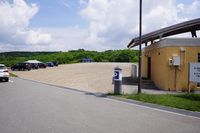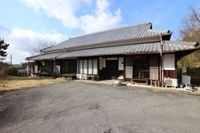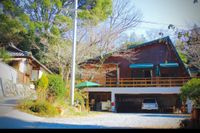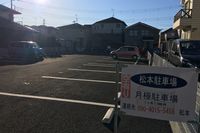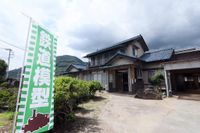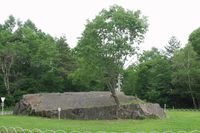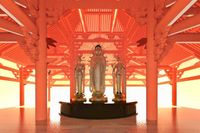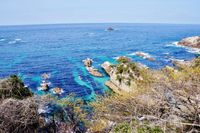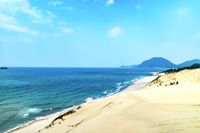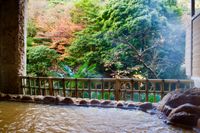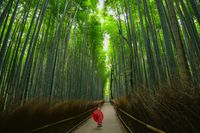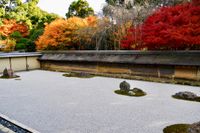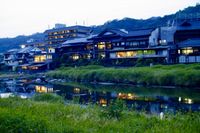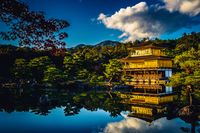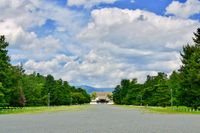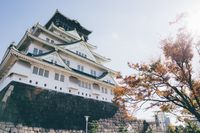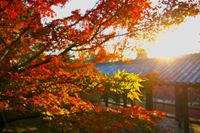Takeda Castle Ruins
兵庫県/朝来市

Description
These are the remains of the Takeda castle built by Yamana Sozen in 1431. The castle fell during the Tanba district attack of Toyotomi Hideyoshi during the "Battle of Takeda Castle" and was destroyed completely during the battle of Sekigahara. The castle was originally built at the top of Mount Koga, and due to its geographical location and stunning views, would often be shrouded in clouds, giving it the name of the "Heaven castle" or "Japan's Machu Picchu".
Homepage
Address
Nearby Car Night Spots
Nearby Activities
There is no nearby activities
Ranking Stations
Shin Meishin Suzuka PA (inbound) RV Station Suzuka * With Power!
¥2,200〜
/ per nightMie Yamamotocho, Suzuka-shi
4.4
(123)Railway Guest House Tetsunoya (hot spring available)
¥3,000〜
/ per nightYamanashi Shizume, Kasugai-cho, Fuefuki City
5.0
(15)Nearby Drive Spots
Kinosaki Onsen
This is an old hot spring in the northern part of Hyogo prefecture. The onsen opened 1300 years ago. It has been consistently been recorded as a highly ranked and regarded onsen. During the Meiji era(1868-1912), it was a place of healing for wounded soldiers during the Russo-Japanese war, and was also the setting for Shiga Naoya's "Kinosaki nite". It is a popular destination for those visiting the 7 hot springs along Otani River, and the willows trees along the river make for a magical landscape.
Yuhigaura Beach
This is a bay area in the northern area of Kyoto, facing the Japan Sea. This is an ideal photo spot with its sunning sunset views. Visitors can also enjoy snorkeling in the shallow beach, for which the area is popular.
Amanohashidate
This is a 3.6 km sand dune that separates Miyazu Bay and Aso Sea from north to south and is one of the three major scenic spots in Japan. Over thousands of years, around 8,000 pine trees have grown here, and creates a mysterious landscape on the eastern side with the white sand scape. It is also said that if you bend down and look between your legs, the landscape will resemble a dragon rising up to the sky.
Jodoji Temple
This is a Shingon sect temple built in 1198 under the instruction of Chogen. The objects of worship are known as Yakushi Nyorai and Amida Nyorai and three great Buddha statues known as Amida Sansonzo, created by Kaikei are desiganated national treasures, along with Jodo do. At Mountain next to Jodoji Temple, there are around 10,000 hydrangea flowers along the path, providing a vividly colorful view.
Himeji Castle
This is Japan's only world heritage castle built in 1346 under the instruction of Akamatsu Sadanori. It is one of Japan's 12 castle towers and one of 5 registered as a national treasure in Japan. It is also known as one Japan's three greatest castles. It was expanded by its respective castle owners such as Toyotomi Hideyoshi and Ikeda Terumasa during the Sengoku era(1467-1600), to become the impressive castle that it is today. Due to its impressive white appearance, it is also known as the "White Egret castle".
Kurotaki Falls
This is a waterfall that runs down the Mino River. With a height of 4 meters and a width of 30 meters, the waterfall has two stages, and the area is ideal for photography particularly due to the early morning glow. The area has also been a setting for various traditional folk stories and plays.※兵庫県 黒滝の朝 © Tomato_249 クリエイティブコモンズライセンス(表示4.0 国際)https://creativecommons.org/licenses/by/4.0/
Uradome Beach
This is a 15km stretch of Ria type coastline along the norther Tottori prefecture area. There are various cliffs, rock and cave formations, with various sea birds inhabiting the area. It is also known as the "Matsushima of the Sanin area" as the area is said to resemble Matsushima in Miyagi prefecture. There is also a beach area which attracts visitors looking to enjoy beach and water activities.
Ine no Funaya Houses
This is a type of traditional unique to the area, in Kyoto Ine Town. The building consists of a ship storeroom with living quarters above. The first floor has a ship warehouse as well as a storeroom and workship, with a living room on the second floor. It is thought that there are around 200 of these arbor shops in existence from the Edo era(1603-1868).
Tottori Sand Dunes
This is a 16km coastal sand dune, the largest in Japan, situated in Tottori prefecture. The three sand dunes are lined more or less in parallel with the Japan Sea, and the second middle sand dune, known as "the horse's back" is the most famous photo spot. The area is also popular for paragliders, hangglidesr and sand boats.
Arima Onsen
This is one of Japan's three most famous Onsen in Kobe city. It opened back in 1400, and was loved by Toyotomi Hideyoshi during the Sengoku era(1467-1600), and was known as the greatest Onsen in the Kansai region during the Edo era(1603-1868). The water at the spring is plentiful in iron, and three of the famous baths include the "Gold water", "Silver Water" and a bath known as "Taiko no Yu".※Credit:一般財団法人神戸観光局
Mount Rokko
This is a 931 meter tall mountain in north Kobe. The sky observation deck as well as the observation area that looks down into the landscape below is named as one of Japan's three best night views, where one can see Osaka, Seto Inland Sea and Shikoku. This view is also known as "Kobe's 10 million dollar view".
Arashiyama Bamboo Grove
This is a bamboo forest of around 400m in Sagano. This was an area opened by aristocrats and noblemen in the Heian era(794-1185), and this area loved by the upper echelons of society back then still exists today, around 1,000 years later. This symbol of Kyoto brings in many tourists. It is recommended that you visit in early morning or later evening to be able to enjoy at leisure.
Tenryu-ji Temple
This is a temple built under the instruction of Ashikaga Takauji in 1345, and is a branch temple of Rinzai Tenryu-ji sect head temple. It was built as a place of relaxation for Emperor Godaigo. The main object of worship is Shaka Nyorai, and is registered as a world heritage site. The area is also popular for autumn leaf viewing, as there are amazing views of the Arashiyama autumn leaf trees.
Ryoanji Temple
This is a Rinzai sect temple built by Hosokawa Katsumoto in 1450. The main object of faith is Shaka Nyorai, and is registered as World Heritage Site. The famous stone water garden known as "Karesansui Garden" is said to represent a Zen landscape, and is arranged such that one cannot see all 15 stones at the same time. The area became famous when UK's Queen Elizabeth II visited here in 1975.
Misasa Onsen
This is a hot spring in the centre of Tottori prefecture. With 900 years of history, the onsen was loved by writers such as Yosano Akiko, Nogushi Ujo and Shiga Naoya. The area was known as a place of healing - so much so, that it was known as the place "where illness disappears by the third day of being here". Along both sides of Mitoku River, there are various traditional Japanese Ryokan, making this a popular onsen town to experience the nostalgia of the Japan of times past.
Kinkakuji Temple(Golden Pavilion)
This is a Rinzai sect temple built by Ashikaga Yoshimitsu in 1397. Kannon Bosatsu is the main object of worship, and is registered as a World Heritage Site. The golden Shariden temple known as "Kinkaku" in the centre of the Garden is said to represent paradise in this world. In the Kyoko-chi Pond, there are several stone islands known as Ashihara-jima islandTsurushima islandKameshima island dedicated to the feudal lords who served Ashikaga Yoshimitsu, the Shogun whose home the temple was. Along with Ginkakuji Temple(Silver Pavilion), these two temples are the great symbols of the Muromachi era(1336-1573).
Kifune Shrine
This is the head shrine of the Kifune Shrine group, of which there are around 450 in Japan, although the construction date is unknown. The main shrine God was historically known as a rain God named "Takaokami no Kami", and worshipped as a bringer of rain and bountifulness. It is also said that drawings of horses were made on wood here, giving birth to the "Ema" which are the wooden plaques that one can see at many shrines with prayers written on them. Around 300 meters away from the main hall, one can visit "Yui Shrine", where there is another God that is said to bring destined couples together, known as Iwanagahime no Mikoto. The area is popular amongst couples.
Kyoto Imperial Palace
For 500 years between 1392 and 1869, the various generations of emperors lived here, where public ceremonies were held and administration took place. Originally, the place began as a small hall known as "Tsuchimikado Higashi no Toindono", but was expanded by Ashikaga Yoshimitsu, an important Shogun in Japanese history. It was established by Oda Nobunaga and Hideyoshi Toyotomi, to become the place as it is seen today. It ended as a place of government when the Emperor Meiji and royal family moved to Tokyo in 1869, and became open to the public from August 2016.
Osaka Castle
This is one of Japan's three largest castles built by Toyotomi Hideyoshi in 1583. It was also the scene for the great battle known as "Osaka no Eki", fought between the Toyotomi clan and Tokugawa noble families after the death of Toyotomi Hideyoshi. The current castle tower was built by the Tokugawa family after the death of Toyotomi, and is known as one of the great symbols of Osaka. It is familiar to many people and is known as the "Taikohan Castle".
Tofukuji Temple
This is a Rinzai sect temple built in 1236 by Enni, and is a branch temple of Rinzai Tofukuji sect head temple. The main object of worship is Shaka Nyorai, and the name takes one character from the Todaiji Temple and Kofukuji Temples respectively. The oldest gate in Japan is here, which was rebuilt by Ashikaga Yoshimochi in 1425, and is a designated national treasure. In addition from the Tsuten bridge, provides optimum views of the vivid autumn leaves, and is said to be the best autumn leaf viewing spot in Kyoto.

